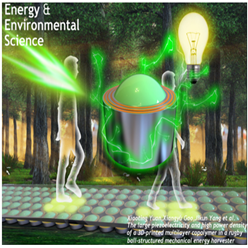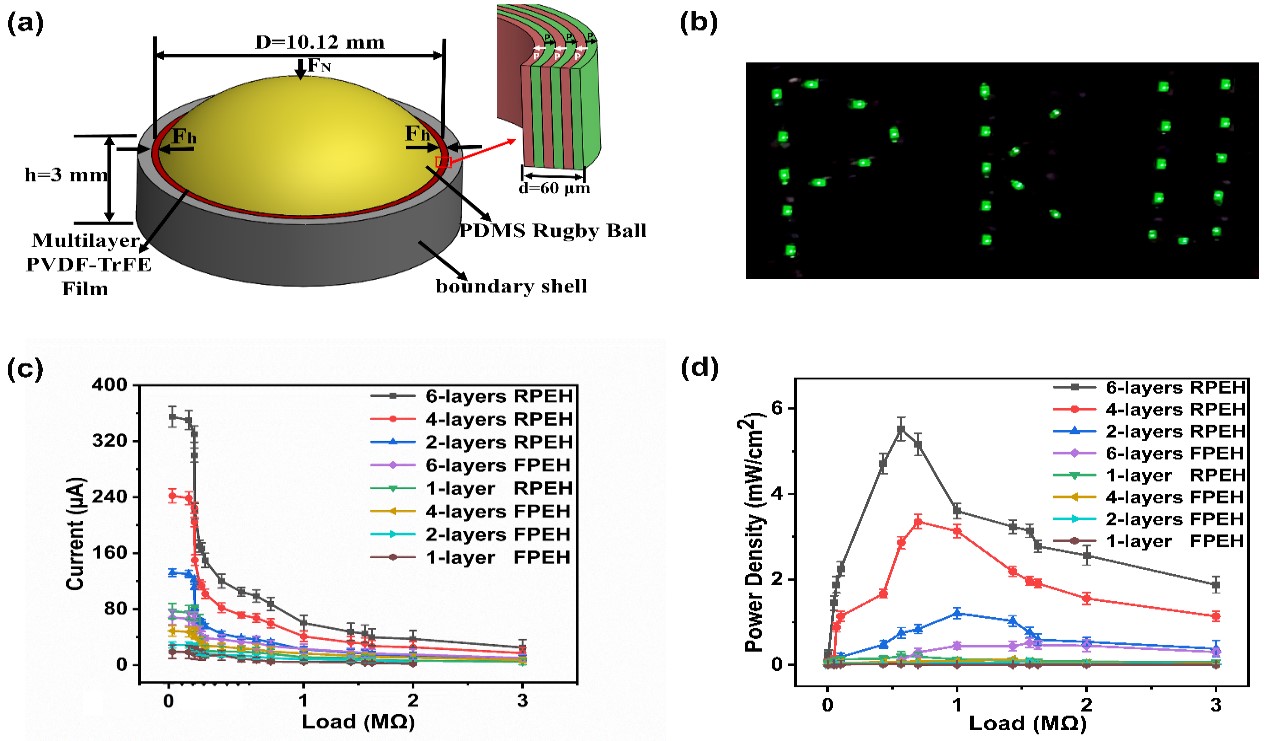Peking University, Nov. 20, 2019: Harvesting energy from natural sources such as mechanical strain, motion, light, heat, and magnetic fields has become a research hotspot because of potential application for wearable, self-powered electronics and wireless sensor networks (WSNs) in the Internet of Things (IoT). As for energy harvesting from mechanical strain and motion, conventional methods employed piezoelectric, electrostatic, and electromagnetic mechanisms, individually or coupled together; however, as a typical self-powered and self-sensing wearable device, a piezoelectric energy harvester (PEH) shows more advantages such as simple structure, miniaturization, and high energy density etc.. In comparison to the traditional brittle inorganic ceramic and the single crystal materials, piezoelectric polymer PVDF and its copolymer exhibit the characters of flexible, low acoustic impedances, wide response frequencies, stable chemical properties, and easily being processed into any shape; therefore, they are more suitable for collecting the walk-induced electric charges in wearable electronics. However, the piezoelectric and dielectric performances relative to those of inorganic piezoelectric ceramics or single crystals are still very poor, as a result, their power density are quite low.
Recently, under the funding support of Beijing Science and Technology, Professor Dong Shuxiang’s group in College of Engineering, Peking University developed a 3D printing equipment. With the help of the 3D printer, a rugby ball-shaped multilayer copolymer energy harvester operating in flextensional mechanism was prepared. The obtained piezoelectric coefficient and power density were greatly enhanced. The experimental results show that the produced peak voltage and current under a pressure of 0.046 MPa at 3.5 Hz are ∼88.62 Vpp and 353 μA respectively. Notably, the induced peak output power density was as high as 16.4 mW cm−2, which is an order of magnitude higher than those of other flexible piezoelectric harvesters, and it is also comparable to the power density of solar cells. The proposed copolymer processing method and flextensional mechanism in a rugby ball configuration are significant for future micro-energy development in flexible, wearable electronic devices and wireless sensor networks.

The results of Dong's group were published online in Energy & Environmental Science
The related research was published in the journal Energy & Environmental Science on October 15, 2019, entitled “The large piezoelectricity and high power density of a 3D-printed multilayer copolymer in a rugby ball-structured mechanical energy harvester” (DOI: 10.1039/C9EE01785B).

The design and performances diagram of the piezoelectric energy harvester: (a) A schematic diagram; (b) 30 LEDs can be lit directly with the harvester; the output current (c) and power (d) of harvesters, under a dynamic compression stress of 0.046 MPa at 3.5 Hz
The first author of this paper is the Ph.D. candidate, Yuan Xiaoting (2017), and Professor Dong Shuxiang is the corresponding author of the paper. The work was jointly supported by National Natural Science Foundation of China (51772005,51132001), Beijing science and technology project, Beijing Key Laboratory of Magnetoelectric Functional Materials and Devices and Xin’ao Energy Technology Company.
Edited by: Huang Weijian
Source: College of Engineering, Peking University